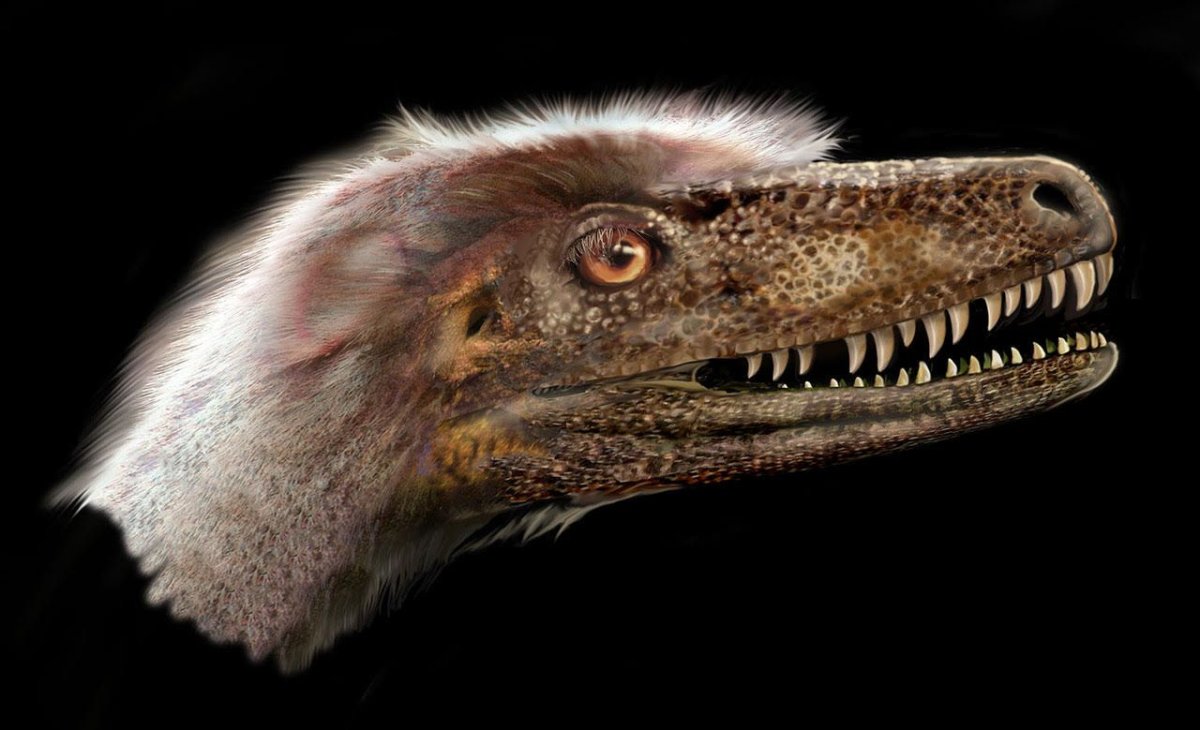A rare dinosaur fossil found in southern Alberta is being called a “scientific goldmine” by researchers from the University of Alberta and the Royal Ontario Museum.

A 76-million-year-old, nearly complete dromaeosaurid saurornitholestes langstoni specimen was unearthed in Dinosaur Provincial Park, located about a two-hour drive southeast of Calgary, in 2014 by world-renowned U of A paleontologist Clive Coy.
Saurornitholestes is a small, feathered carnivorous dinosaur within the dromaeosaurid family (also known as “raptors”) that was previously known from fragmentary remains.
READ MORE: U of A scientists use dinosaur teeth to discover how big lizards hunted
The species has long thought to be so closely related to velociraptor from Mongolia that some researchers even called it velociraptor langstoni.

For decades, researchers studied fragments and partial skeletons found in Alberta and Montana, but reasonably complete skeletons remained elusive, and virtually nothing was known about the skull.
The lack of truly diagnostic material was problematic and made it difficult to know how the fossils found in Alberta compared with raptors found elsewhere.
READ MORE: Hip bone discovery in southern Alberta shakes up dino family tree
That changed in 2014, when an almost complete skeleton, including a skull, was collected by Coy less than a kilometre from where the previous benchmark for the species — called a holotype — was found.

The U of A said the new skeleton is exquisitely preserved, with all the bones — except for the tail — in life position. (No photos of the actual fossil were made available to the media.)
Coy, along with University of Alberta colleague Philip Currie and David Evans from the Royal Ontario Museum, then made what they said was a “landmark discovery” showing how the fossil differs from a velociraptor.
READ MORE: Edmonton professor uncovers megaraptor in Argentina
The research identified a unique tooth evolved for preening feathers and provided new evidence that the raptor lineage from North America, that includes the saurornitholestes dinosaur found in Alberta, is distinct from an Asian lineage that includes the famous velociraptor.
The new research – focusing on the skull – shows that the North American form has a shorter and deeper skull than the velociraptor, the University of Alberta said, adding at the front of the skull’s mouth, the researchers also discovered a flat tooth with long ridges, which was likely used for preening feathers.
The same tooth has since been identified in velociraptor and other raptors.
“Because of their small size and delicate bones, small meat-eating dinosaur skeletons are exceptionally rare in the fossil record,” Evans said.
“The new skeleton is by far the most complete and best-preserved raptor skeleton ever found in North America. It’s a scientific goldmine.”
The university said the study also establishes a distinction between raptors in North America and Asia.
“The new anatomical information we have clearly shows that the North American dromaeosaurids are a separate lineage from the Asian dromaeosaurids, although they do have a common ancestor,” Currie said.
“This changes our understanding of intercontinental movements of these animals and ultimately will help us understand their evolution.”
Currie said paleontology in general is a gigantic puzzle where most of the pieces are missing, and the discovery of this specimen represents the recovery of many pieces of the puzzle.
“This ranks in the top discoveries of my career. It is pretty amazing.”
READ MORE: New dinosaur is part penguin, part duck, part swan: ‘kind of a bizarre one’
The findings were published in the American Association for Anatomy’s The Anatomical Record journal.





Comments